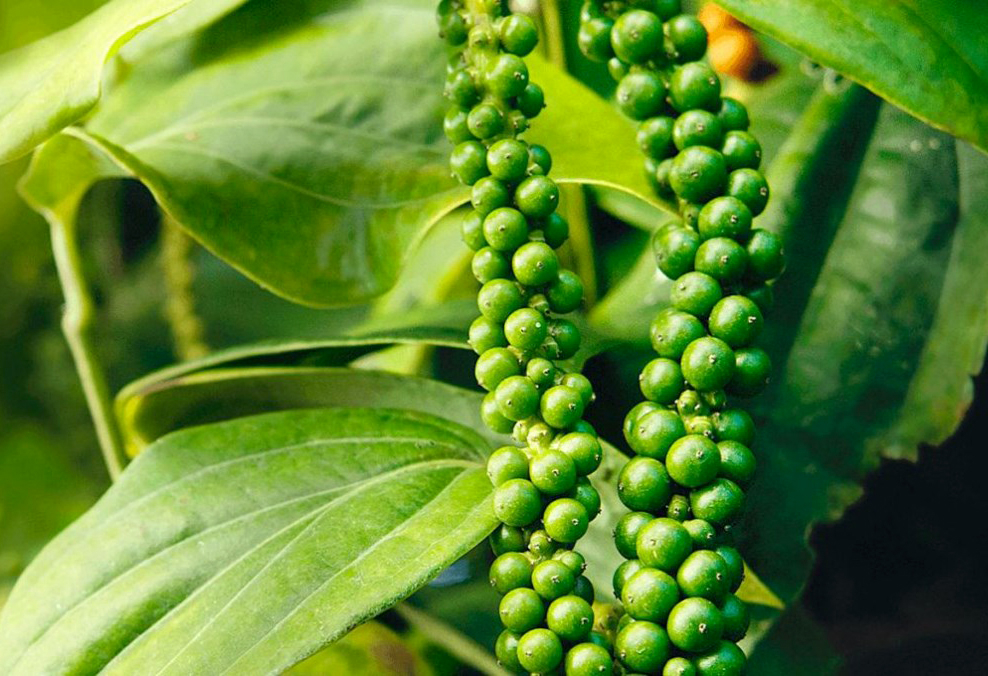November 25, 2025 | 16:03 GMT +7
November 25, 2025 | 16:03 GMT +7
Hotline: 0913.378.918
November 25, 2025 | 16:03 GMT +7
Hotline: 0913.378.918

Some banned substances are still detected on pepper.
At the Workshop on Evaluation of the EVFTA Agreement - Opportunities and Challenges for the Sustainable Development of Vietnam's Pepper and Spices Industry, held on August 8 in Ho Chi Minh City, the Vietnam Pepper and Spices Association (VPSA) said that some banned substances are still being detected on pepper samples.
Specifically, in the study of pesticide residues on pepper in accordance with EU regulations, through analysis and testing of 284 pepper samples collected in the 2 years 2021 - 2022 of some exporting enterprises and laboratories, the results showed that 38 active ingredients were detected, the total frequency of active ingredients was 2,462, the total value meeting the EU MRL regulation was 2,051 and the total value of failing was 411.
In which, active substances were detected with high frequency, including: Chlorpyrifos Ethyl (killing worms, termites, mosquitoes, worms); Cypermethrin (kills flies, mosquitoes, termites, ants, cockroaches); Metalaxyl/Metalaxyl-M (sum), Metalaxyl (fungicide); Imidacloprid (kills insects and termites); Carbendazim (fungicide); Fenobucarb (insecticide and pesticide); Propamocarb (fungicide).
According to VPSA, it can be seen that most of the pepper samples are contaminated with active ingredients related to the prevention of pests and harmful fungi on pepper plants. In which, some active ingredients have been removed by Vietnam but still appear in pepper such as Carbendazim and Chlorpyrifos Ethyl. This is very worrying, especially if people continue to use banned drugs to care for pepper.
According to VPSA, the EVFTA Agreement signed on August 1, 2020 has allowed the application of a tax rate of 0% for tax lines on pepper and spices. However, the export and market expansion is still not commensurate with the potential because the EU market conditions and standards are quite high and strict in terms of quality, traceability and food safety. In addition, there is the impact of the Covid-19 pandemic, the world economic crisis caused by the conflict in Eastern Europe.
In the first 6 months of this year, pepper exports to the EU only reached 4,316 tons, while the total amount of pepper exported to markets was 153 thousand tons. In 2020, 2021 and 2022, the amount of pepper exported to the EU reached nearly 40,000 tons to 48,000 tons.
Translated by Hoang Duy

(VAN) An Giang promotes supply-demand connections, standardizes quality and builds value chains, creating a foundation for sustainable bird’s nest development and aiming to expand exports.
/2025/11/24/5339-4-nongnghiep-075331.jpg)
(VAN) Recently, the conference on 'Sustainable Fisheries Linkage Chain - Tilapia for Export' took place in Tien Hai commune, Hung Yen province.
/2025/11/21/4309-2-153400_128.jpg)
(VAN) Green and low-emission rice is paving the way for Vietnamese rice to enter high-end markets, marking the beginning of a transformation journey toward greening and elevating the national rice brand.

(VAN) ‘Right to Win’ outlines a national action plan that shapes a new vision for Viet Nam’s agriculture in an era of renewal and global integration.

(VAN) Lam Dong’s farmed sturgeon output this year is expected to reach 2,300 tons, worth VND 450 billion, affirming the brand’s position on the market.

(VAN) A surge in Ukrainian egg exports, largely driven by soaring sales to the UK over the last few years, has notably pushed up egg prices on the domestic market.

(VAN) The price of Arabica Catimor coffee in Quang Tri is currently at VND 25,000–27,000/kg (fresh cherries), the highest level ever recorded